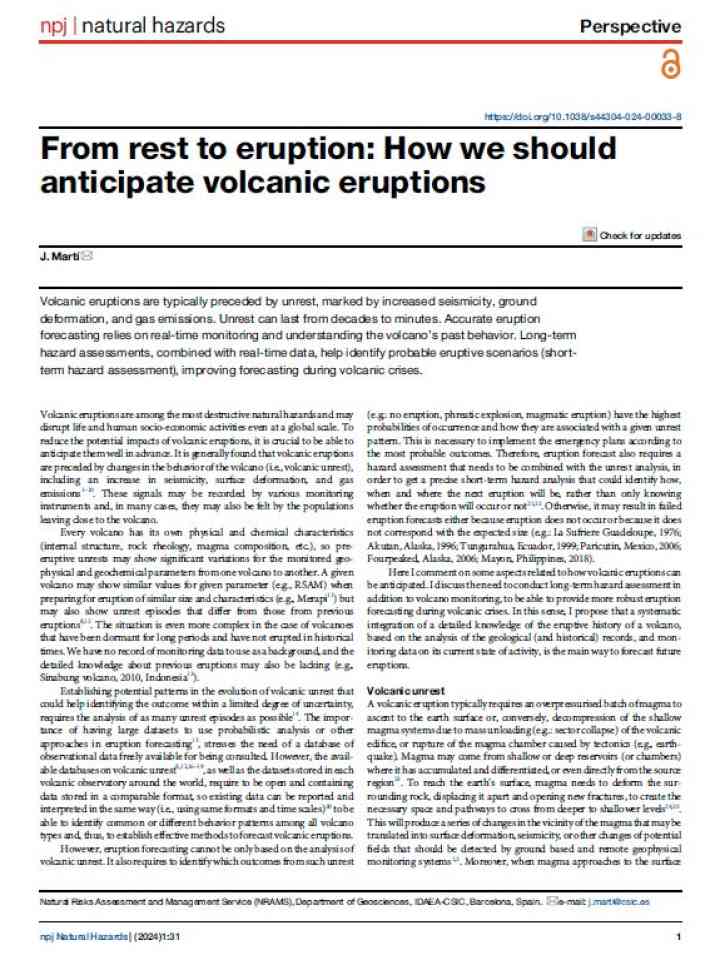From rest to eruption: How we should anticipate volcanic eruptions
The author proposes that a systematic integration of a detailed knowledge of the eruptive history of a volcano, based on the analysis of the geological (and historical) records, and monitoring data on its current state of activity, is the main way to forecast future eruptions. Volcanic eruptions are typically preceded by unrest, marked by increased seismicity, ground deformation, and gas emissions. Unrest can last from decades to minutes. Accurate eruption forecasting relies on real-time monitoring and understanding the volcano’s past behavior. Long-term hazard assessments, combined with real-time data, help identify probable eruptive scenarios (short-term hazard assessment), improving forecasting during volcanic crises.
The study suggests identifying unrest patterns at the same volcano and from volcanoes with similar characteristics, it is crucial to obtain as many retrospective analyses as possible. This would help to categorize volcanoes according to unrest types or levels of unrest. Moreover, it would facilitate establishing predictive models based on the identification of patterns that repeated in the past and that may represent a particular relationship between unrest evolution, magma and rock properties, and potential eruption dynamics.
Explore further
